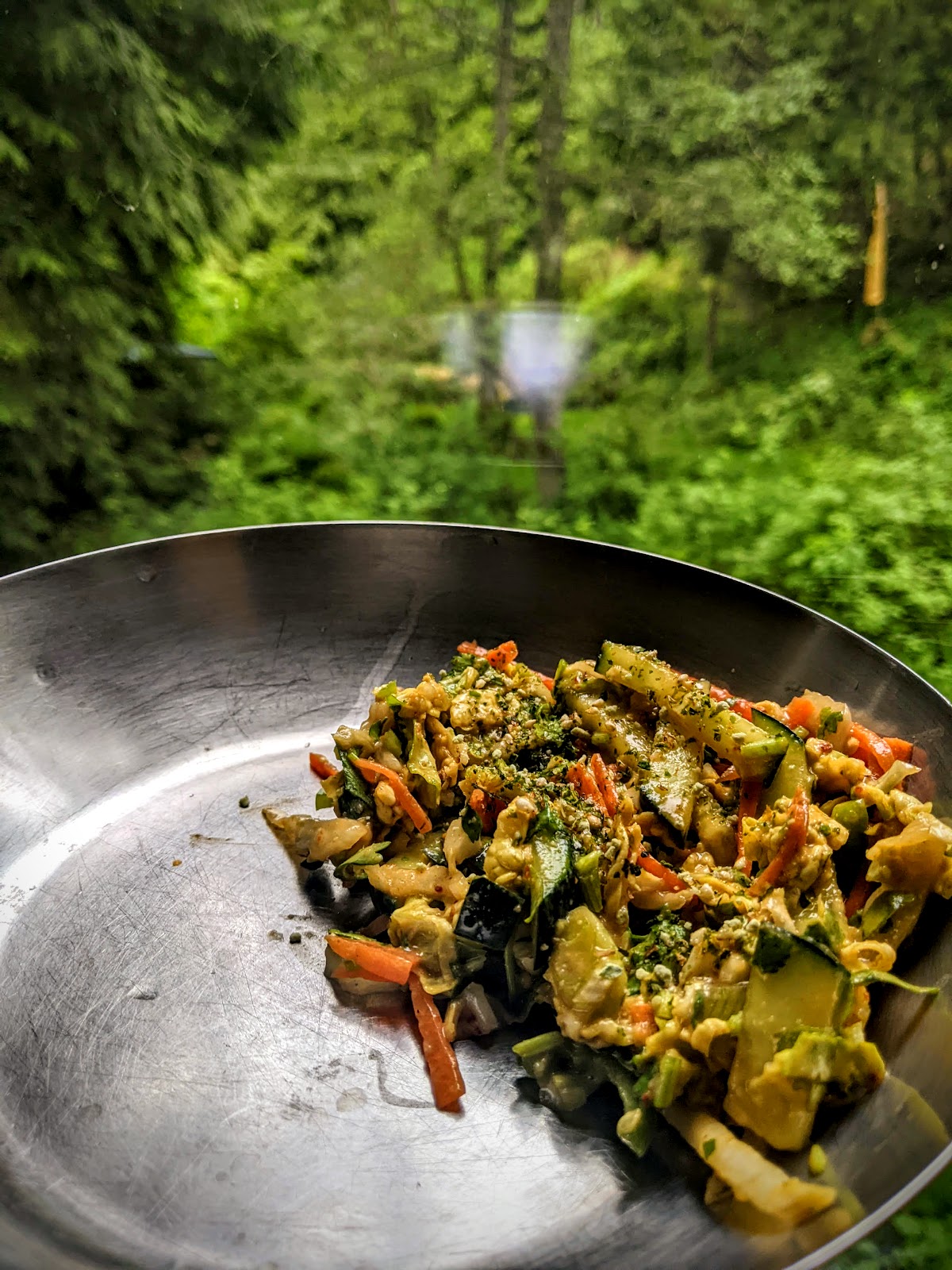Salad of the Summer, 2023 Version
Spring arrives and thoughts drift to fresh produce, less clothing, and all things fecundity. Emily and I get into food themes, and we keep making variations on that theme. Like tacos (every food delivered in a taco). Curries. Thai. Indian. Maki/temaki (every food delivered in a roll or handroll). Bánh Cuốn (every food... you get the idea). We also get into seasonal salads and tend to crack out on one salad any given summer. I'm calling it now: the 2023 Salad of the Summer is Thai Peanut Sauce Slaw.
For me (Wayne), what makes any given recipe a daily driver is its ability to adapt to what one has on hand. This is not a recipe, per se, but rather a guideline to leverage what is available. This is one of those guidelines. If you think it fits in a salad or slaw, it goes in here.
Apologies for anyone looking for an actual peanut sauce. I always bullshitspiration my way through a peanut sauce. And I am always happy. The DuckDuck will deliver you more peanut sauce recipes than you know what to do with.
Guidelines:
- Slaw fixings/base – whatever; seriously, if it is neutral in flavor and goes in a slaw or salad, it will romp here. Napa, white cabbage, cucumbers, carrots, parsnips, kale, instant ramen noodles... whatever you have in the pantry and produce bin that you think fits.
- Alliums – garlic, garlic powder, green onion, white onion, red onion... you need that savory, sulfurous, spicy bite of alliums. If you're sensitive to the allium bite, soak them in salt and lime, or subject them to heat. Think sweating and caramelization.
If you start with dried allium mince or powders, DO NOT rehydrate them in the presence of acids. They don't develop in a reasonable amount of time and develop weirdly. The big example here is putting garlic powder in your tomato sauce. The secret to dealing with dried alliums is pre-hydrating them in some water until aromatic. Dried alliums require rehydration to fully develop and acids prevent that development. Even given a lack of acid, dried alliums require time to develop. - Peanut sauce/slaw dressing – see above. Don't forget the umami. Fish sauce and oyster sauce should always be in your pantry. They can add that magic wallop to any dish lacking that nebulous "something."
- Acid – Since we're making a Thai slaw, lime is required. Fresh lime juice in preferred, but prepared lime juices will suffice. There are differences in character between fresh lime and all other lime preparations. The differences are a topic outside the scope of this blog post. That said, True Lime lime powder is our go-to when we are missing fresh limes. We always keep this in stock.
- Topping – something crunchy, crispy on top right before serving. Khao khua (Thai toasted rice), peanuts, cashews, fried onions, toasted instant ramen noodles, sesame seeds, furikake. Again, whatever you have on hand.
- Heat (optional) – Capsaicin is a magical additive here if you are so inclined. Aleppo and cayenne pepper to taste. Try sriracha, your favorite hot sauce, some fresh or dried chilis..
Assemble the dressing/sauce to flavor. Assemble slaw base. Add heat. Adjust flavor. Top with crispy tasty bits. Crack out. Make an extra large batch or otherwise don't be surprised if the slaw doesn't make it all the way to dinner.




Comments
Post a Comment